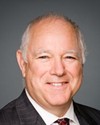We have forecast that we will continue to see increases in the number of individuals coming in.
I want to make sure I give you the correct numbers. There is a bit of a myth out there as it relates to Afghanistan, in my view. Others may disagree, Mr. Chair. Generally speaking, about 35,000 men and women served in Afghanistan, and that would be somewhere in the vicinity of 55,000 to 56,000 deployments, I would say.
There is this myth, and maybe it's driven a little by the media, that if you served in Afghanistan there must be something wrong with you. The vast majority of men and women who've come back from Afghanistan have not been injured and are not injured. I want to give you some numbers here.
I'm going back to our December quarterly report. Of the 35,000 men and women who have served, 4,181 are clients of Veterans Affairs as a result of their service in Afghanistan. That's not to say there will not be issues of late-onset PTSD, and as my colleague Mr. Parent has noted, some may be suffering in silence, but I just want to put that in perspective. When you look at the numbers, as you project, yes, hundreds of thousands have served. But when you relate it just to the Second World War, one million Canadians served in the Second World War, and the legacy this left in terms of the needs to be met lasted over generations, I would say.
I want to give you the perspective in terms of the numbers because there is a sense out there.... Some Afghanistan veterans have said to me they're a little concerned that people look at them and ask if they're okay because they've served in Afghanistan. There is a certain stigma, and I think we have to be very careful we don't oversell that.
The other thing I think is important is that many of the cases we have are challenging, but I want to give you another statistic, just to put things in perspective. If you look at people who are seriously injured, who are at 78% or above, the numbers who are currently in the system receiving or eligible for earnings loss is about 800. When I look at Afghanistan using that same criteria, those who were seriously injured number about 450. So I'm not saying these individuals are not important. They're extremely important and certainly the more severe your disability, your illness, or your injury, the greater support you need and must get from Veterans Affairs. Everybody is injured, and most of the disability awards we pay out are for fewer than 25%. That's not to say that this isn't important.





